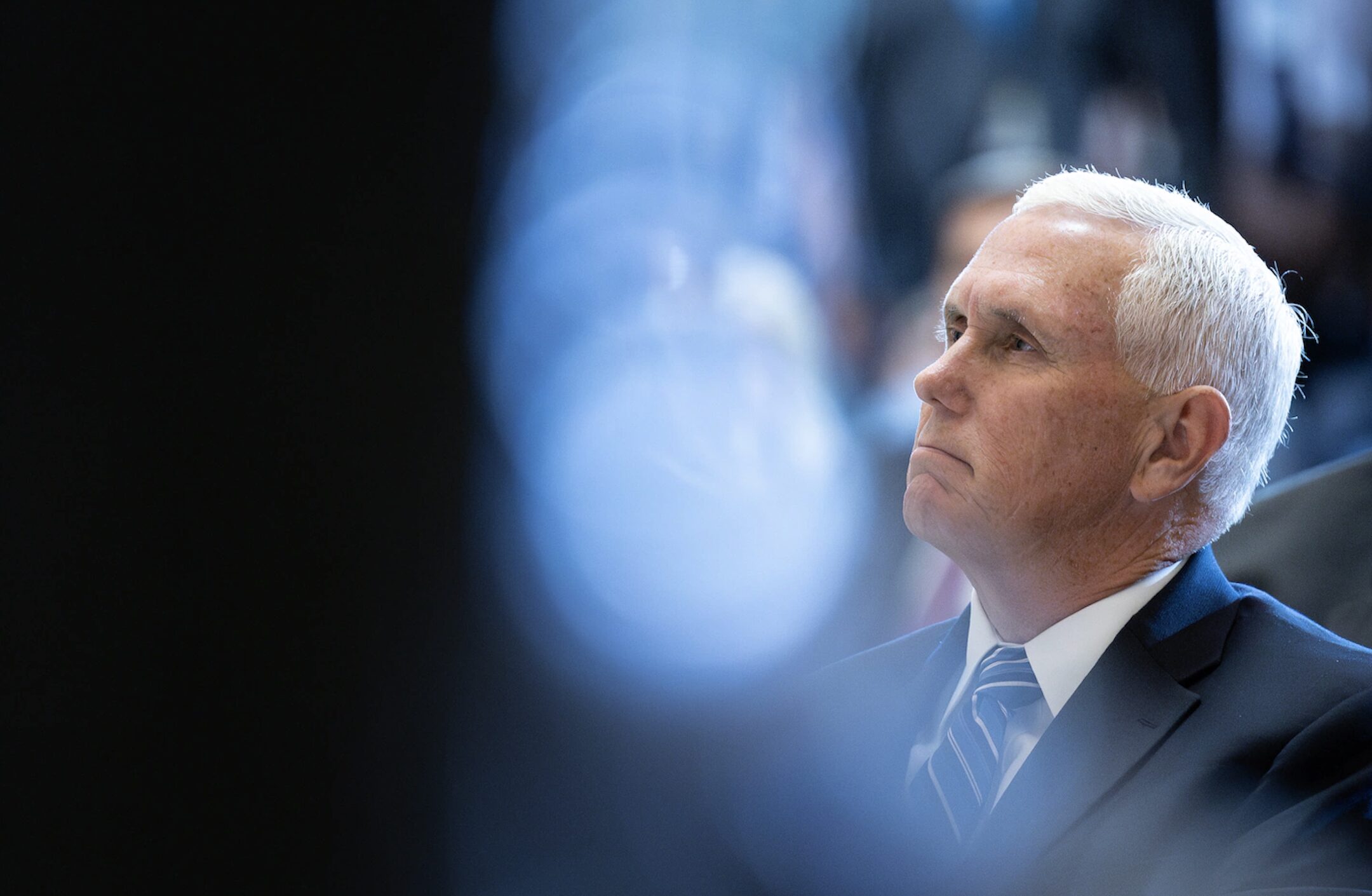
Segun Oduolowu and Matt Britton: The Future of AI
In this special edition episode of The Speed of Culture Podcast, host Segun Oduolowu sits down with Suzy Founder & CEO Matt Britton live from…
Thought Leader: Matt Britton, Segun Oduolowu

“I just want my life back,” said the singer Britney Spears on Wednesday.
In 2008, Ms. Spears’s father was granted a conservatorship over her because of concerns about her mental health. According to her testimony last week, the arrangement has been used to force her to go on tour, to undergo psychiatric evaluations and to take medication.
“I don’t feel like I can live a full life,” she told a Los Angeles judge. She could not even visit with friends who lived “eight minutes away.” The conservatorship was doing “way more harm than good,” she said.
The parallel is not exact, I admit. But one woman’s desire to be free of conservatorship sounded to me a lot like the rest of humanity’s desire to be free of Covid-19. Since the novel coronavirus began spreading throughout the world nearly a year and a half ago, we have all, to varying degrees, been subjected to regular evaluations of our health (tests) and encouraged if not required to take medication (in the form of vaccines). As for not seeing our friends … Well, I think we all want our lives back.
It would probably be wrong to conclude that lockdowns did more harm than good in the developed world, though they could certainly have been avoided or shortened by earlier reliance on testing and tracing. But a new working paper published by the National Bureau of Economic Research strongly suggests that lockdowns did do more harm than good in developing countries. “In low-income countries,” the authors argue, “a lockdown can potentially lead to 1.76 children’s lives lost due to the economic contraction per Covid-19 fatality averted.”
There was an “intergenerational tradeoff” in the developed world, too, in the sense that younger people suffered significant educational and economic losses because of restrictions imposed mainly to limit sickness and mortality among the older age groups most vulnerable to the pandemic.
Regardless of our age, we all want this to be over. But it so isn’t. I knew when I was finishing my book on the history of disasters late last summer that the pandemic had some way still to run.
There was a chance, I wrote, that it might be over by Easter 2021, and that “the world economy would snap back to life once this became clear.” However, “there was a worse scenario, in which we would spend years playing whack‑a‑mole with an endemic, evolving SARS-CoV‑2, with no vaccine that really worked and no immunity that really lasted. By the standards of past pandemics, this one might still be at an early stage — perhaps not even at the end of the first quarter.”
I wrote those words nearly a year ago, on July 6, 2020. It turns out that the vaccines (well, some of them) work better than I had dared to hope, and the world economy is indeed snapping back. And yet we may still be languishing in the second quarter of this pandemic — or maybe it’s early in the second half.
My struggle last week to get from northern California to South Wales to see family and friends after 18 months of separation has convinced me that the return to normality is going to be a lot slower than most of us would like to believe — and not only because of this virus’s shape-shifting character.
I have a bad feeling that even if we succeed in containing the spread of SARS-CoV-2 — to the extent of bringing mortality rates back down to normal levels everywhere — we may be unable to get rid of many of the pandemic-induced constraints that now restrict our freedoms as much as Britney Spears’s conservatorship restricts hers.
Let me illustrate the point with some personal experience, which I offer here not as a Britney-style lament but as an example of what most international journeys are like these days. My wife and I have been fully vaccinated since March. Our sons, who are both under 10, have not been. In order to fly to the U.K., of which three of us are citizens, we had to fill in a great many online forms, take PCR tests, and arrange and pay for two further rounds of testing during the 10-day quarantine imposed by the Welsh government.
We arrived at the airport very early, bearing a file full of documents that were carefully scrutinized by airline staff before we could board the aircraft. During the entire 10-hour flight, all of us — including our 3-year-old — had to wear face masks. The cabin crew insisted that we could only remove these momentarily to sip a drink or take a bite of the rations that were served. (Warning: When it comes to food and drink, all flights appear now to be operated by EasyJet.) Following our arrival at Heathrow, the documents were once again examined by U.K. border officials.
To say that this was fun would be a lie. It was in fact quite stressful. At each stage of the process, we saw other travelers fall foul of the health bureaucracy.
One couple were prevented from checking in at San Francisco as they lacked the correct documentation for a connecting flight to Croatia. At the departure gate, another woman’s test results were found in some way deficient. I heard more oaths and saw more tears than I can ever remember on such a trip.
Since arriving at our vacation home, we have been quarantined. This is supposed to be for 10 days but, as one’s arrival day is “day zero,” it will in effect be for 11. We have all passed the first test; our noses and tonsils will be swabbed again later today. When the landline rings, it is nearly always a polite lady from the Welsh test-and-trace service making sure we’re still there and not gallivanting around the fleshpots of Swansea.
Even when we get out of Covid jail, government rules will limit how many of our relatives and friends we can see in our remaining time here. Restrictions on social life that were supposed to be lifted on June 21 were extended, just before we set off, for another four weeks.
Masks are still required in many indoor settings and on public transportation. Outdoor gatherings of up to 30 people are allowed but, if you want to meet indoors, the maximum number is six, unless you restrict the gathering to members of just two households.
The police can break up gatherings that violate these rules and impose fines up to $14,000. At first sight, the “rule of six” poses a significant challenge to the planned rehearsals of the jazz septet to which I belong.
In short, if you are thinking of taking a long-haul flight anywhere in the world right now, my advice is: stay home.
Now, don’t get me wrong. I am not saying that all these restrictions are unnecessary. True, the U.K. Office for National Statistics recently confirmed that daily Covid deaths have fallen to the lowest level since last September (the seven-day average is just 16). But daily cases, which fell below 2,000 last month, have surged above 16,000, due mainly to the rapid spread of the more contagious Delta variant.
Paradoxically, the U.K. now leads Europe in terms of both vaccine doses per hundred and cases per million. Hospitalizations are also up.
My 22-year-old son and his friends have spent much of their university careers at Bristol in a shared house, studying remotely and observing the social distancing rules. But the end of exams (cue parties, albeit outdoors) coincided with the arrival of the Delta variant. Last week he and several of his friends tested positive. Maddeningly, he had only just had his first of two vaccine shots.
In his case, as for many other young Britons, vaccination came too late. The U.K. not only left the 20-somethings until the later stages of its vaccination rollout. It also prioritized getting first shots to as many adults as possible, rather than aiming for earlier full vaccination of a smaller proportion of people.
At first, this seemed smart. The problem is that, compared with earlier variants such as Alpha (B.1.1.7), the Delta variant is significantly easier to catch if you’ve had only one shot. Indeed, it turns out to be easier to catch even if you’ve had both shots.
A new study published in the Lancet — based on 19,543 confirmed infections and 377 hospitalizations in Scotland between April and June — shows that implied vaccine efficacy 14 days after the second dose fell for both the Pfizer and AstraZeneca vaccines. For the former, efficacy fell from 92% to 79%; for the latter, from 73% to 60%.
Nevertheless, these are still pretty good efficacy numbers. I therefore remain skeptical that fully vaccinated people need to be confined to barracks for 10 days, especially when they fly in from a country like the U.S. where the Delta variant is (as yet) not very widespread. The rule of six also seems excessively restrictive for fully vaccinated Britons.
When both clinical trials and real-world data point to high vaccine efficacy, especially for the Pfizer and Moderna vaccines, and when governments are keen to persuade people to get vaccinated, why on earth make the social benefits of being vaccinated so negligible?
The answer is clear. Such restrictions persist not because they have any foundation in scientific research. They are the products of one of history’s most powerful but often underestimated phenomena: bureaucratic inertia.
The medical reasons why the pandemic could drag on much longer than we would like to face are obvious enough. First, the virus simply cannot be eradicated because we are not its only hosts. Good luck vaccinating the minks. Second, to quote a sobering new piece co-authored by the great American epidemiologist Larry Brilliant, “The world will not reach the point where enough people are immune to stop the virus’s spread before the emergence of dangerous variants — ones that are more transmissible, vaccine resistant, and even able to evade current diagnostic tests.”
Looking back on last year’s published research, I would say that nearly everyone underestimated just how much this virus could mutate in ways that would cause problems. It is only a couple of months ago that I was worrying about how fast B.1.1.7 would spread from the U.K. to the U.S. Then there was B.1.351 (now Beta) in South Africa. Then P.1 in Brazil (Gamma). Now it’s time to worry about Delta (formerly B.1.617.2), which was first detected in India and is now dominant in the U.K.
Delta illustrates the problem of new variants very well. In the U.K., first doses have been administered to 64% of the population and both doses to 47%. But this has not sufficed to prevent the latest wave of infections, even without a full lifting of “nonpharmaceutical interventions,” or NPIs. Delta presents two challenges. First, the mutation to its spike protein allows it to attach to human cells more effectively, thus increasing transmission. Second, as we have seen, it reduces the efficacy of existing vaccines, especially the first dose.
Both of these factors push up the reproduction number, i.e., the number of people to whom an infected person will typically pass the virus. Imperial College London has published an estimate of the basic reproduction number for the Delta variant of 7.8, compared with 4.5 for the Alpha variant. Lockdowns plus vaccines can bring that number down, but to get it below 1 is not easy.
India had a disastrous spring because very few people had been vaccinated. Delta spread like wildfire, killing hundreds of thousands. The U.K.’s 2021 experience has been much less severe thanks to a very successful vaccination rollout, but the effective reproduction number still rose from 0.9 to a peak of 1.48.
In the U.K., according to estimates by J.P. Morgan Securities (published on June 21), a further 4.9 million people need to be fully vaccinated to bring the effective reproduction number back down to one, which will take 19 days at the current pace of vaccination, assuming that the current levels of mobility and NPIs are held steady. In the U.S., 47 million more people need to be fully vaccinated to hold the reproduction number at one if the Delta variant spreads as it has in the U.K. That will take 54 days.
It will take another 11 days of sustained vaccination to allow the U.K. to return to pre-pandemic levels of mobility (less in the U.S., because mobility is already nearly back to normal). With around 60% of the total population vaccinated, a new normal is achievable — with current nonpharmaceutical interventions remaining in place. But to get to the old normal with pre-pandemic mobility and no NPIs, we would need to see vaccination rates of around 86% to 88% of the total population.
Bear in mind that the Greek alphabet has 24 letters, and Delta is only the fourth. We already have Kappa (B.1.617.1), first identified in India, now spreading in Australia — but did I miss Epsilon, Zeta, Eta, Theta and Iota?
Bear in mind, too, that there are certainly other variants out there that have yet to be identified. Whereas in the past month the U.K. has sequenced over 27% of its recent positive Covid-19 tests, in Italy that figure is less than 1%, according to Gisaid, a global public-private effort for sharing information on viruses.
As I said to a medical friend last week, it’s Omega I really worry about. Do we seriously think Delta is the worst variant of this virus we’ll see?
It is in this context that governments all over Europe are bowing to public pressure and easing restrictions. Outdoor mask-wearing is ending in France and Switzerland. France will lift its 11 p.m. curfew. Americans will be allowed into the European Union, and Europeans from the 26-nation Schengen area into Switzerland. Italy will re-open nightclubs by early July. In Hungary, the government has lifted all restrictions on crowd sizes.
Followers of European soccer will have noticed that stadiums are filling up. If, like me, you love the sound of football fans chanting, this has been exhilarating. But it also probably means that the Delta variant will spread even faster across Europe this summer.
Meanwhile, in the U.S., with restrictions rapidly being lifted, the delusion is widespread that Covid is over. That seems most unlikely. Daily vaccination rates have declined from a peak of more than 4.6 million doses given in a single day in mid-April to just around half a million daily doses last week. According to Centers for Disease Control data, 80% of adults older than 65 had been immunized by May 22, compared with just 38.3% of 18- to 29-year-olds.
The variation is also enormous between states. The South and West are far behind New England. In Bristol County, Rhode Island, 95% of over-65s have been fully vaccinated. In Billings County, North Dakota, the figure is 21%.
The principal obstacle is a suspicion of vaccines that has been recklessly fueled by misinformation and disinformation on social media platforms such as Facebook and YouTube. Over a quarter of Americans are unvaccinated and unwilling to get vaccinated (more than twice the U.K. share); another 11% are unvaccinated and uncertain. Case numbers are already surging in Missouri (the seven-day average is up 65% in the last month), Arkansas (up 61%) and Oklahoma (45%).
According to the latest projections from the Institute for Health Metrics and Evaluation, there could be at least another 25,000 American deaths by Oct. 1 — and that leaves out the possibility of a further wave in the fall and winter. Yet the projection for the world as a whole is a terrifying 1.1 million additional deaths by the end of September. This reflects much more than vaccine hesitancy. Just as significant are vaccine insufficiency and vaccine inefficacy.
The U.S. and other developed countries bought many times the number of doses they needed from several manufacturers. At the same time, some countries imposed restrictive export regulations. Lack of support means that Covax, the international initiative to accelerate global vaccination, is far short of its goal to get a billion doses of vaccine to 92 poor countries.
Only 22% of the world’s population has received one shot and just 10% is fully vaccinated. A third of vaccine shots have gone to high-income countries, 52% to upper-middle-income, 14% to lower-middle-income, and just 0.3% to lower-income.
True, China has exported more than 200 million doses of its four homegrown vaccines to 90 countries. But recent outbreaks in Mongolia, Bahrain, Chile and the Seychelles — even after majorities of their populations have been vaccinated — are raising hard questions about how well the Chinese vaccines work. Funny how the Chinese pharma companies never published Phase 3 trial results, isn’t it?
The longer all this goes on, of course, the harder it will become to peel away the layers of regulation that have accumulated in the past year and a half. I fear that, as in the years after 9/11, we are already getting used to restrictions that at first seemed intolerable. Nearly 20 years on, I can still remember how irksome those first Transportation Security Administration checkpoints were. Now I go into a kind of trance, doomscrolling on my iPhone or reading a paperback, whenever required to form an orderly line at an airport.
And the spirit of today’s bureaucracy — “out of an abundance of caution” is the key phrase used by officials who have been taught that even a 0.01% risk is too much — will ensure that at least some rules and regulations stay in place even when they do little or no good (or even net harm).
This, as the government-reform advocate Philip K. Howard has long argued (most recently here), is one of the most distinctive features of the modern era: the ratchet effect that means new regulations are easy to add, very hard to subtract. Does a state of emergency such as the one declared last year ever end? True, many governors are formally ending the emergencies in their states (including New York on Thursday). But at the national level it’s a different story.
According to a Mercatus Center paper published last year by Weifeng Zhong, Christos Makridis and James Diddams, “The eight presidents since 1976 have declared a total of 64 national emergencies under the National Emergencies Act, 35 of which are still in effect to this day and most of which outlasted their motivating emergencies.” The oldest of the 35, “Blocking Iranian Government Property,” was declared in 1979. I was 14 years old.
In short, get used to the online forms. Get used to the tests. Get used to the test-and-trace calls. You probably should get used to the vaccines, too, as you’ll doubtless need a booster shot before the year is out. Above all, get used to the increasingly elaborate regulations because, let’s face it, there are hundreds of thousands of people employed for the sole purpose of generating such rules and almost none whose job it is to scrap them.
The good news is that, if you have the patience to struggle through the bureaucratic jungle, you will every now and then find a precious loophole. In Wales, renowned the world over as the “land of song,” it turns out that choirs and brass bands are now permitted to rehearse in groups of up to 30, albeit with somewhat stricter rules for wind and brass players than for pianists and bassists.
I am now printing out the relevant pages and look forward to presenting them, stapled together and with appropriate highlighting, to any police officer who attempts to interrupt our septet on Saturday night. For one British jazz band, if not for Britney, the Covid conservatorship is over.
Segun Oduolowu and Matt Britton: The Future of AI
In this special edition episode of The Speed of Culture Podcast, host Segun Oduolowu sits down with Suzy Founder & CEO Matt Britton live from…
Thought Leader: Matt Britton, Segun Oduolowu
Mike Pence: What It Means to Be a Conservative
With a forthcoming book, the former vice president reflects on what it means to be a conservative. This Halloween, Mike Pence went trick-or-treating for the…
Thought Leader: Mike Pence
Edward Fishman on Bloomberg: Global Energy Policy
Edward Fishman joins Bloomberg on October 30, 2025. Edward Fishman is one of the world’s foremost experts on economic statecraft, with deep experience shaping U.S.…
Thought Leader: Edward Fishman

